When you’re limited by the size of your tank, you’re forced to find creative solutions to the challenges you face.
In this sense, creating a nano aquascape requires a great deal of ingenuity because small aquarium plants aren’t always that easy to find.

To spare you some time, I’ve created a list of 18 tiny aquatic plants that are all great choices for a nano tank.
Before we get to them, however, let’s clarify how small these plants exactly are.
Typically, nano tanks have a height of 10 inches so any aquarium plant that doesn’t exceed this size usually works fine.
With that being said, let’s not waste any more time and move on to the list.
18 Small Aquarium Plants for a Stunning Nano Tank
Aquarium plants are essential to providing oxygen and stability to the water in your tank, which serves to create a healthier home for its inhabitants. Along with being helpful for the tank’s environment, aquatic plants also protect fish while creating a visually pleasing landscape.
When I was younger, I thought that artificial plants were the perfect decoration for my fish.
It wasn’t until I got older that I realized how adding live plants to my Nano tank can bring it to life.
Anyway, here’s a list of some of the tiny aquarium plants you can use in a nano tank:
1. Baby Leaf – Bolbitis Difformis
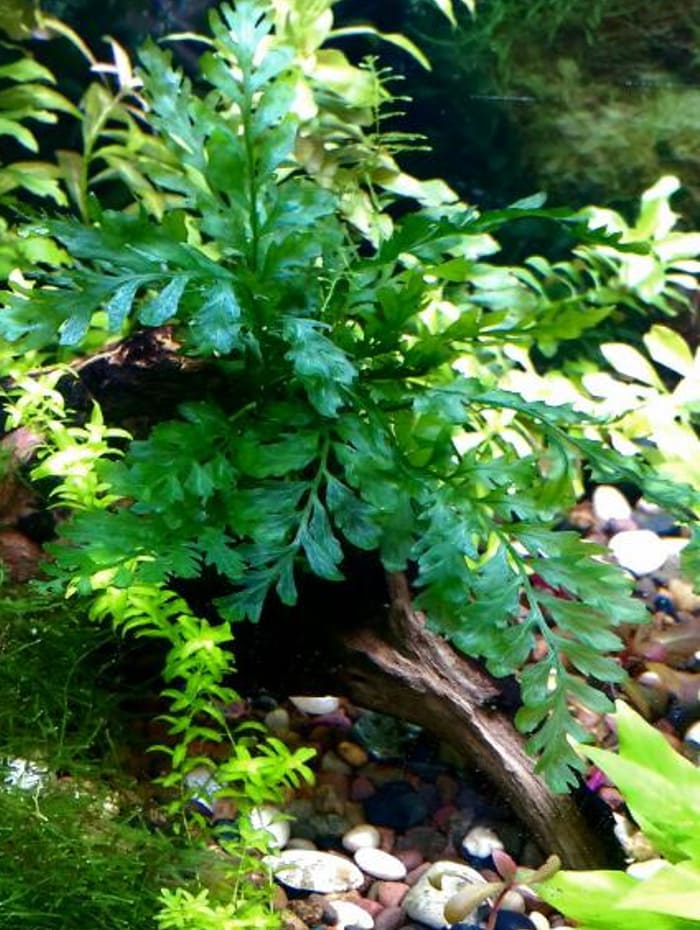
by hollo
- Suitable for a Beginner: Yes;
- Suggested Lighting: Low;
- Growth Rate: Slow.
Baby leaf also known as Bolbitis Difformis, originates from South East Asia and typically grows to be about 4 inches tall at its highest.
This tiny plant grows very slowly and it takes a few months for it to reach its full height.
This means that it will grow about 1 inch or 2.5 cm per month.
The Baby Leaf has small leaves and it can be planted easily in the tank, but it thrives better in areas with high flow.
Also, try to keep the tank as stable as possible, since too much change can cause the plant to become diseased and die.
Author’s Note: You shouldn’t bury the lower part of the stem (rhizome) in the substrate, since this will inhibit the growth of new leaves.
2. Dwarf Sagittaria – Sagittaria subulata

by nicholas2010e
- Suitable for a Beginner: Yes;
- Suggested Lighting: Medium;
- Growth Rate: Fast.
Sagittaria subulata is most commonly found in South America and some parts of North America, and it grows about 4-6 inches (10-15 cm) in height.
This plant grows fairly quickly so trimming and pruning are a must if you don’t want it to overtake the tank.
This is a hardy plant, so it’s more resilient than other small aquarium plants on the list.
The main way to care for your Dwarf Sagittaria is to keep it trimmed to promote health and growth in the plant.
3. Brazilian Micro Sword – Lilaeopsis brasiliensis
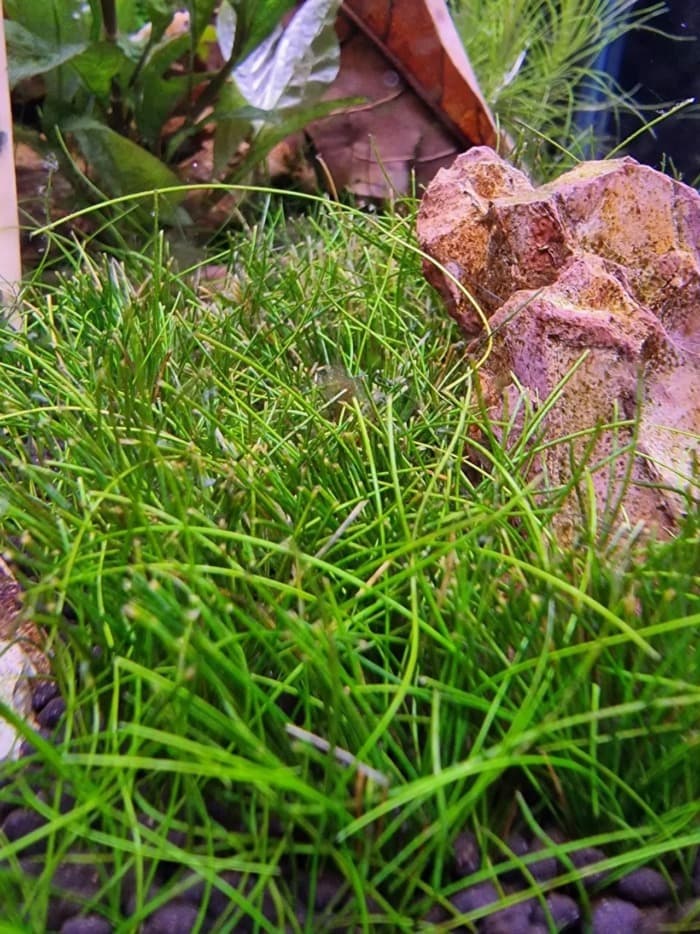
by Bambuča
- Suitable for a Beginner: Brazilian Micro Sword is not a beginner-type plant, but it also isn’t too difficult to grow with some previous experience in caring for small planted aquariums;
- Suggested Lighting: Medium to Strong. Strong lighting will promote horizontal growth in a carpet-like effect while medium lighting will cause the plant to grow slower vertically as well as horizontally;
- Growth Rate: Slow to medium depending on the size of the tank. In a Nano tank with bright lighting, the Brazilian Micro Sword will grow faster horizontally to form a carpet across the bottom of the tank.
Lilaeopsis Brasiliensis is commonly found on the edges of water banks in South America.
This tiny plant is only 3 inches (7.5 cm) tall, but it’s still not the smallest plant on this list.
The growth rate varies depending on the lighting within the Nano tank. Brighter lights will promote faster plant growth in the tank than dimmer lighting would, but it would still take several months for the Brazilian Micro Sword to reach its full size.
If you’re looking for the best foreground plant to include in your tank, The Brazilian Micro Sword is a smart option to choose.
4. Anubias Nana Petite – Anubias barteri
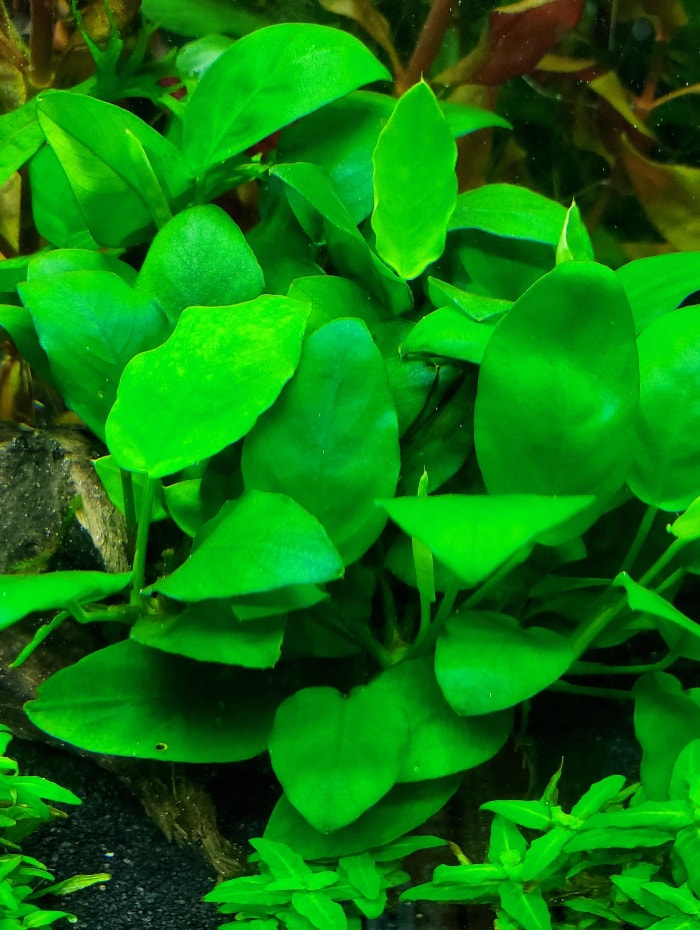
by Cryptic_E
- Suitable for a Beginner: Yes;
- Suggested Lighting: Low;
- Growth Rate: Slow.
Anubias barteri of the family Araceae from West Africa is a freshwater plant that stands at about 3-5 inches (7.5-12.5 cm) tall at its highest.
This tiny aquatic plant grows fairly slowly which makes having the correct lighting very important.
Due to its slow growth, it tends to grow algae on its leaves if the lighting within the tank is too bright, so to achieve the best results, simply opt for dimmer lighting.
Also, this plant thrives when planted on hard surfaces, so look for wood or stone when choosing a spot to attach it. Keeping on with the theme of the low-maintenance plants, you can check this article to learn more about some fish that will fit right into such an environment.
5. Anubias Congensis – Anubias Afzelii
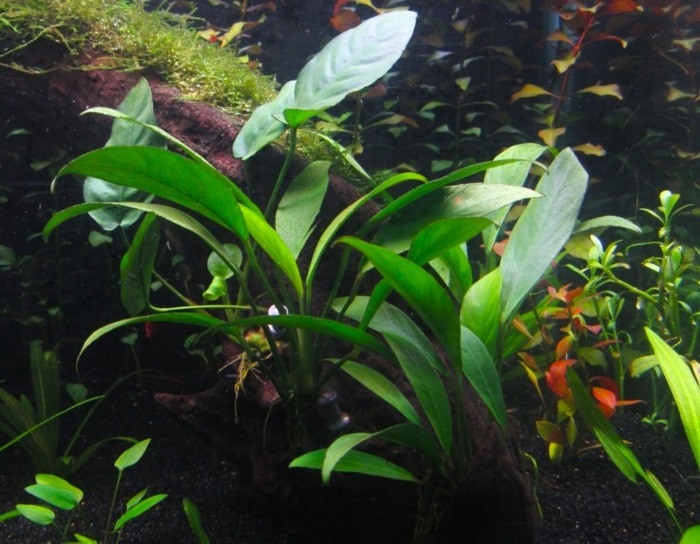
by burr740
- Suitable for a Beginner: Yes;
- Suggested Lighting: Low;
- Growth Rate: Slow.
Similar to some of the other entries on this list, the Anubias Afzelii from the Araceae family can also be found on the water banks in West Africa.
Although these plants aren’t considered “tall” when compared to other aquarium varieties, in terms of Nano tanks, they tower at a whopping 6-8 inches (15.25- 20.3 cm).
Anubias Congensis is a slow-growing plant that does best when planted on a wood or stone surface. To ensure the best care possible, maintain dim lighting and increase CO2 to promote growth.
6. Java Moss – Taxiphyllum barbieri
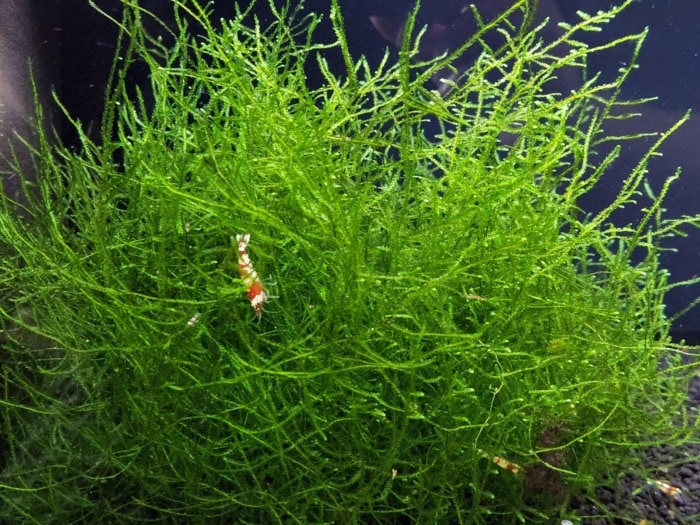
by nofeelings14
- Suitable for a Beginner: Yes;
- Suggested Lighting: Low to medium;
- Growth Rate: Slow.
The Taxiphyllum Barbieri of the Hypnaceae family or simply Java Moss originates from Southeast Asia and can grow up to 3 inches (7.5 cm) tall.
Java Moss grows fairly slowly at about 1 inch a month.
It can grow both on land and underwater but it does best in moist, tropical environments.
This freshwater plant is extremely popular among aquarium enthusiasts due to its versatile and hardy nature.
It can grow on multiple surfaces and environments, but it does best in warmer temperatures of around 75 to 85 degrees.
To give your Java Moss its best chance, you have to maintain the correct temperature. You can browse some of the best aquarium heaters for this purpose in this article.
7. Green Wendtii Crypt – Cryptocoryne wendtii

by Dwn2rthtfthswrld
- Suitable for a Beginner: Yes;
- Suggested Lighting: Medium;
- Growth Rate: Medium.
Cryptocoryne wendtii, a member of the Araceae family is native to Borneo and can grow up to 2-3 inches (5-7.5cm) tall.
This plant grows moderately well and can grow even faster if CO2 is added to the water.
This plant, like others, can grow both in and out of the water, so it’s not too picky when it comes to its environment.
Keep in mind, Green Wendtii Crypt does not respond well to being moved, so pick a spot that can become its permanent home.
Interested in natural filtration? Explore floating freshwater plants and their benefits in this article.
8. Dwarf Water Trumpet – Cryptocoryne Parva

by Deano204
- Suitable for a Beginner: Yes;
- Suggested Lighting: Medium;
- Growth Rate: Slow.
Dwarf Water Trumpet, also known as Cryptocoryne Parva, is mainly found in Southeast Asia and Indonesia and it grows to about 4 inches (10 cm) tall.
The Dwarf Water Trumpet is very slow growing and can take a year or so to reach its full adult height.
This versatile tiny plant can grow in both freshwater and saltwater, so you don’t have to worry about the water specifications too much.
To ensure the best care for this plant, it needs to be provided with iron-rich nutrients in the substrate to guarantee healthy leaves.
9. Brown Wendtii Crypt – Cryptocoryne wendtii

by fr499y
- Suitable for a Beginner: Yes;
- Suggested Lighting: Low to medium;
- Growth Rate: Slow.
Cryptocoryne wendtii plants are typically found in Borneo and are fairly short, only reaching about 3 inches (7.5cm) at their highest.
This aquarium plant grows slowly, and it might take a year or so to see it double in growth.
Similar to its green counterparts, Brown Wendtii Crypt grows well in the water and on the land but it will struggle if moved. For best results use a high-quality substrate and CO2 to boost plant health and encourage growth within your tank.
10. Undulated Crypt – Cryptocoryne undulata

by Reediculous_nanotank
- Suitable for a Beginner: Yes;
- Suggested Lighting: Low to moderate;
- Growth Rate: Slow.
The Undulated Crypt, also known as Cryptocoryne undulata varies in height but it can grow to anywhere between 1 -12 inches (2.5 – 30.5 cm).
The Undulated Crypt grows slowly, but you can still expect to see a little bit of growth every few weeks.
Even though this aquatic plant is easy enough for a beginner to take care of, you will still have to make special accommodations to ensure it is as healthy as possible.
Lighting is important, but it shouldn’t be excessive.
Your plant should get exposed to some light on a daily basis.
Try to also include CO2 and nutrients to ensure the best environment for your Undulated Crypt.
11. Dwarf Hairgrass – Eleocharis parvula
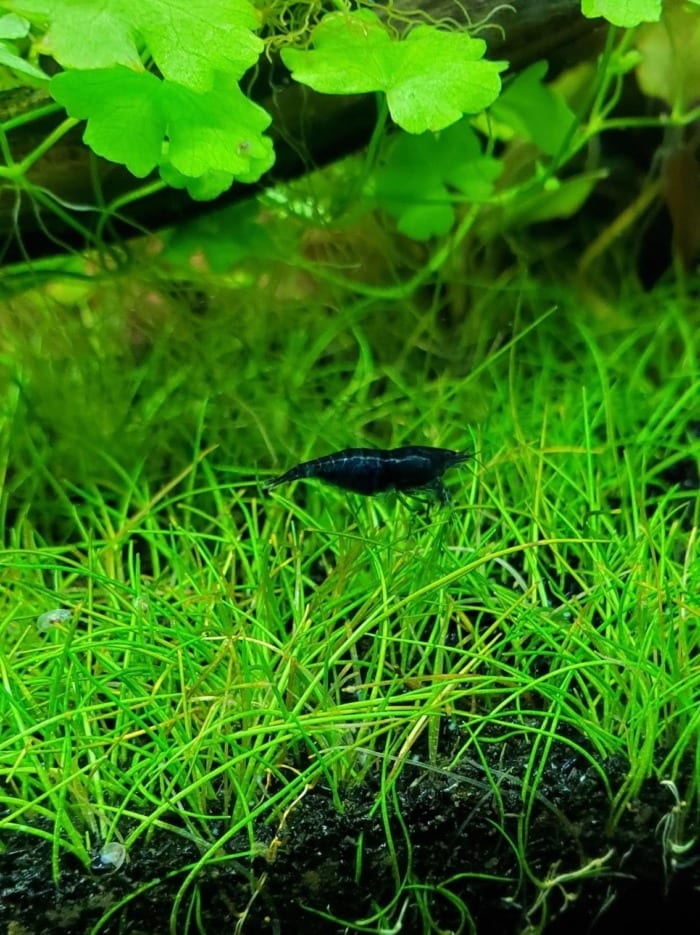
by NotoriousENG
- Suitable for a Beginner: Yes;
- Suggested Lighting: Medium;
- Growth Rate: Fast.
The Dwarf Hairgrass (Eleocharis parvula) is a freshwater plant that is found all across the globe with a height of about 1-2 inches (2.5-5 cm).
This is a fast-growing underwater grass, so you should expect to see some results fairly soon after you plant it.
This dwarf plant is great for oxygenating the water and creating an interactive and stimulating environment for its tank inhabitants.
This is why many aquarists see this plant as the best type of grass for a Nano tank aquascape. The Dwarf Hairgrass grows best when it is exposed to light and planted in sand or loose soil.
12. Pearl Weed – Hemianthus Micranthemoides

by C_6838
- Suitable for a Beginner: Yes;
- Suggested Lighting: Medium;
- Growth Rate: Medium.
Like a few of the other plants on this list, the Hemianthus Micranthemoides originates in North America.
It can stand at a height of anywhere between 2-6 inches (5-15.25 cm) when it’s fully grown.
Pearl weed is not the slowest-growing plant when considering other varieties, so you should notice changes after a few weeks.
This aquarium plant is not picky about location, so you can place it anywhere in your tank depending on the look you’re going for.
Trimming it will cause it to spread out while leaving it will allow it to grow taller for a nice addition to the background.
13. Japanese Bamboo Plant – Blyxa Japonica
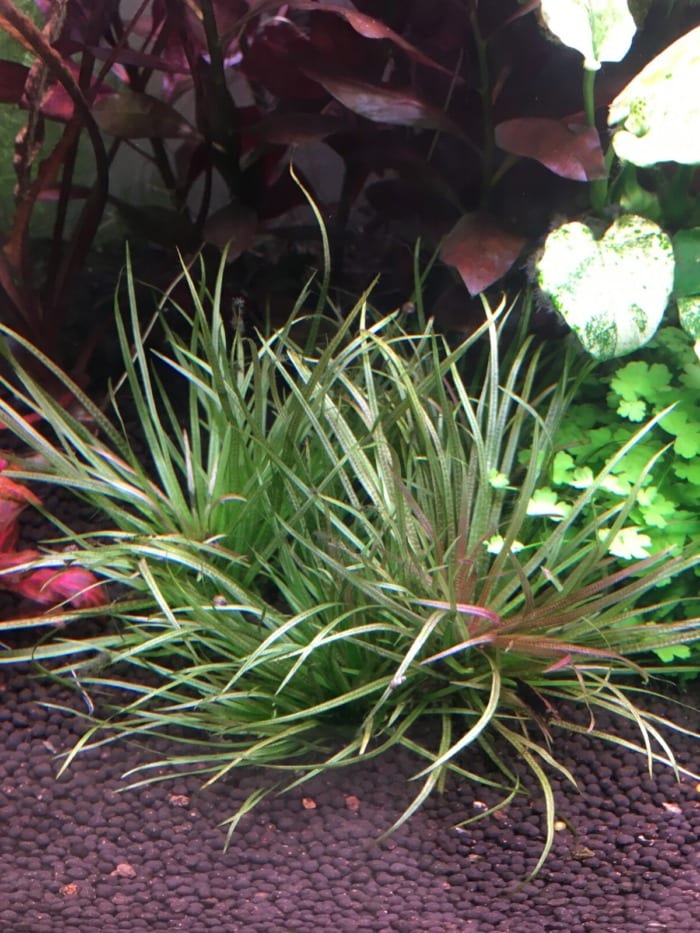
by kivivi
- Suitable for a Beginner: Yes;
- Suggested Lighting: Medium to strong depending on how tall and fast you want the bamboo to grow;
- Growth Rate: Medium to Fast depending on water quality and light exposure.
The Blyxa Japonica can be found in Japan and other countries like China and Taiwan as well.
This plant can range from 4 to 8 inches (10.15-20.3 cm) depending on the level of care provided.
Also known as the Japanese Bamboo Plant, Blyxa Japonica can grow pretty quickly depending on factors like water temperature and sun exposure.
If all requirements are met, this small underwater plant will grow quickly and easily become an attractive addition to the aquascape of your tank.
14. Whorled Pennywort – Hydrocotyle verticillata

by snailysixtynine
- Suitable for a Beginner: No;
- Suggested Lighting: Medium;
- Growth Rate: Medium when submerged and fast when above water.
The Whorled Pennywort, also known as Hydrocotyle verticillata, is found in the wetlands of North and South America.
It’s a fairly tall plant that can stand at a height of 5-20 inches (12.7-50.8 cm) depending on the conditions.
When it is slightly out of the water, this plant grows fairly quickly once planted, but when fully submerged, the growth rate slows down to a moderate pace.
The Whorled Pennywort is not a beginner-friendly plant due to its fragile roots and specific water requirements.
From my observation, it seems that this plant is one of the harder ones to care for, but with the right experience, the Whorled Pennywort can be a great addition to any Nano tank.
15. Water Cabbage – Samolus parviflorus
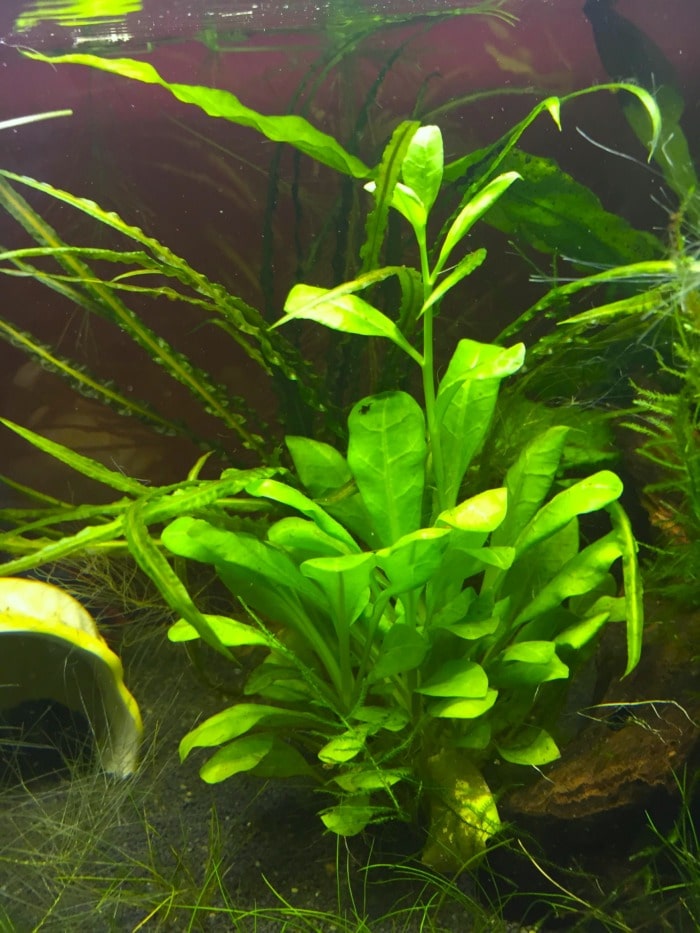
by JustAnotherBrick
- Suitable for a Beginner: Yes;
- Suggested Lighting: Strong;
- Growth Rate: Slow.
The Samolus parviflorus is another great mini plant that can be found in various places throughout the world and stands at about 4 inches (10 cm) tall at max height.
This is a slow-growing plant, so changes won’t be noticeable for a month or so at a time.
If you happen to add this plant to the foreground of your tank, keep in mind that it needs sufficient light as it does not grow well in shade.
It can also be grown as a floating plant in the aquarium.
16. Dwarf Baby Tears – Micranthemum umbrosum
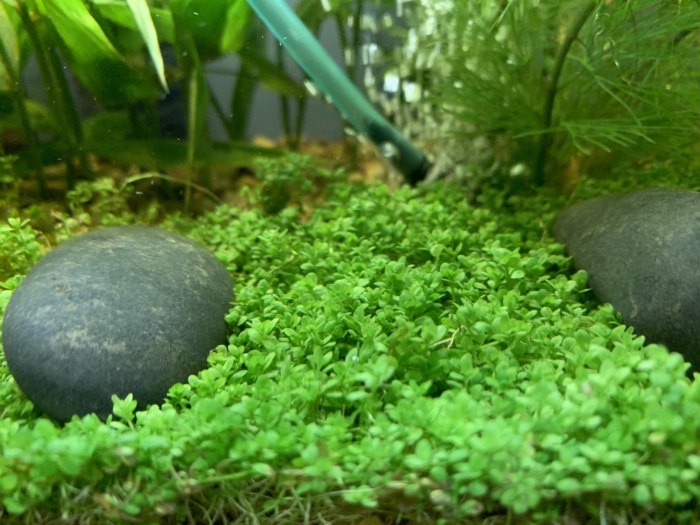
by coconutofcuriosity
- Suitable for a Beginner: Yes;
- Suggested Lighting: Strong;
- Growth Rate: Medium.
The Dwarf Baby Tears, also known as Micranthemum umbrosum is commonly found in the west Indies and grows to be about 1-2 inches (2.5-5 cm) tall.
This water-based plant does not grow very quickly, so expect to see growth every few weeks or so.
Unlike some of the other entries which have the potential to outgrow their tank, the Dwarf Baby Tears is one of the few plants that stay small.
I’m not an expert on the subject, but based on my research, one of the best things to do to keep Dwarf Baby Tears healthy is to prune them regularly.
Also, make sure that they are receiving at least 10 hours of light a day lest they start to deteriorate.
17. Nanjenshan Rotala – Rotala sp. ‘Nanjenshan’

by Vasek
- Suitable for a Beginner: No;
- Suggested Lighting: Strong;
- Growth Rate: Fast.
Rotala sp. “Nanjenshan” is an aquatic plant found in Taiwan that can range from 5 to 10 inches (12.7- 25.5 cm) in height.
This bushy plant can be a very fast grower if it’s provided with a strong source of lighting.
The Nanjenshan Rotala has delicate leaves and requires CO2 and quality soil to survive.
Due to the need for regular maintenance, this plant is not the best choice for anyone who is beginning their small planted aquarium journey.
18. Wyndelov’s Fern – Microsorum pteropus

by Discusluv
- Suitable for a Beginner: Yes;
- Suggested Lighting: Low;
- Growth Rate: Slow.
Last but certainly not least, the Microsorium Pteropus is found in Indonesia and stands at about 3-5 inches (7.5-12.7 cm) tall at its highest.
If you are looking for a plant that is slow growing and popular among aquarists, then Windelov’s Java fern is the right plant for you.
The only downside to this plant is that its slow growth can promote algae buildup. Nevertheless, this shouldn’t be a big cause of concern since adding some algae-eating fish like the Siamese Algae Eater can solve this issue.
The resilience of Wyndelov’s Fern makes it great for beginners who may want to add some variety to their fish tank.
What plants can a small tank setup for beginners include?
Based on the research I’ve done for each of these plants, the Dwarf Water Trumpet, Dwarf Hairgrass, and Windelov’s Fern are the best options for a small aquarium setup.
All of these plants require natural or low light to thrive, which makes them easier to manage and maintain.
They are all also easy to plant and bring some unique and beneficial qualities to your tank.
Another benefit of these plants is the versatility of their use.
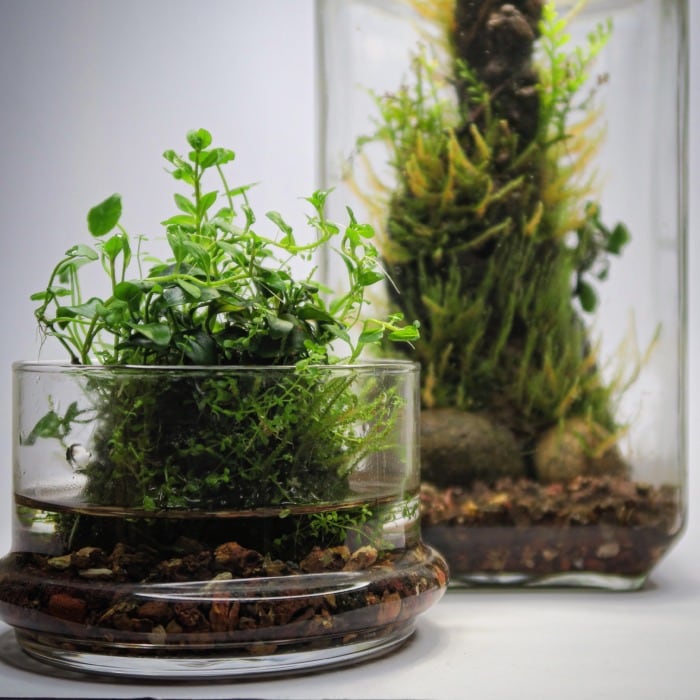
by urban_nemophilist
Windelov’s Fern, for instance, can be attached to rocks, wood, or other types of decor with glue.
Dwarf Hairgrass on the other hand can be grown both submerged and emersed.
What’s more, this plant can even be grown in tiny glass pots in a wabi-kusa setup.
All of these options leave beginners with some room for creativity in the arrangement of their aquarium.
If you don’t know where to begin looking for any of these plants you can start by checking this list of online vendors I personally trust. Some other options for getting plants online could be:
My Final Words
From my experience, I’ve learned that making a successful aquarium takes a little trial and error.
Don’t be afraid to experiment with these small aquarium plants to find which ones work best for you and the environment you want to create.


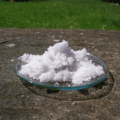
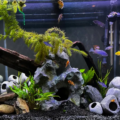



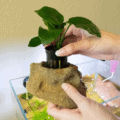
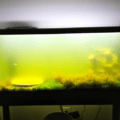
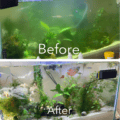

Excellent article. I so appreciate your photos to accompany your recommendations. I have been a fish keeper for 30 years but only recently got into nano planted tanks and can’t thank you enough for this valuable information!
Fran Szymanek
Secretary of the Bucks County Aquarium Society (PA)
Hey, it is very nice to meet you, thanks so much for your kind words. Comments like these are what we look forward to reading as it keeps us motivated in sharing our love for this hobby! Stay tuned, and don’t forget to share the knowledge.